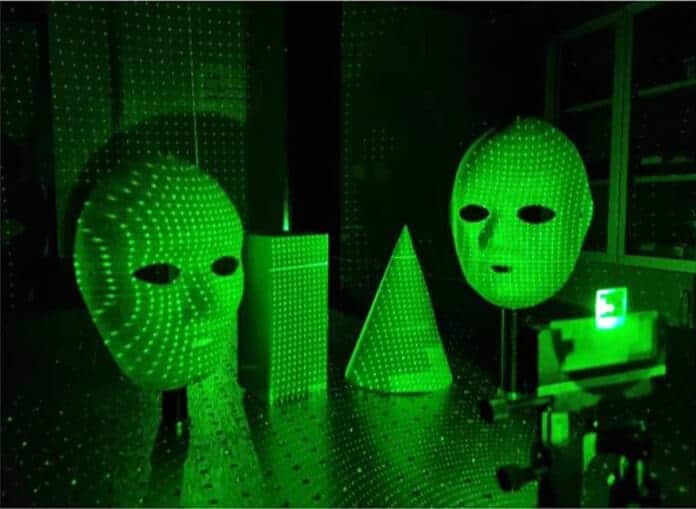
Researchers have managed to build an ultra-small Lidar system that takes a single laser beam and then splits it into 10,000 points, virtually creating a comprehensive Lidar system using very small components. The device is capable of mapping everything around it without rotating, and this could be very useful for self-driving cars.
Lidar is not really a new technology — it’s been around for more than half a century. It works by sending pulses of lasers out around it and then calculating the return time, basically calculating the range (hence the “light detection and ranging” that Lidar stands for). Lidar has been used for several applications, from archaeology (detecting features hidden by vegetation) and mapping buildings or other structures, to self-driving cars.
Since oftentimes, Lidar is meant to be carried on a machine like a drone or a car, making a small Lidar system (but one that’s performant nonetheless) is obviously attractive. But sensors can be big, bulky, and expensive. This is where the new sensor comes in.
Researchers in South Korea have developed an ultra-small, ultra-thin LiDAR device that splits a single laser beam into 10,000 points covering an unprecedented 360-degree field of view. It’s capable of 3D depth-mapping an entire volume of vision (180 degrees) in a single shot.
The research team, which was led by Junsuk Rho of Postech University, modified the design and structure of the materials making up the Lidar, creating sensors that are up to 1,000 times smaller than conventional sensors. Also, unlike most regular sensors, which need to rotate to send out lasers in all directions, this one is fixed.
“We have proved that we can control the propagation of light in all angles by developing a technology more advanced than the conventional metasurface devices,” said Professor Junsuk Rho, co-author of the research. “This will be an original technology that will enable an ultra-small and full-space 3D imaging sensor platform.”
As a proof of concept, the researchers mapped face masks at a distance of 1 meter from the sensor, using a specialized algorithm to extract the information from the Lidar sensor. They also found that the system works better for various curved surfaces, such as glasses or flexible substrates.
Because the sensor is so small, it makes it particularly attractive for use in drones and even smartphones. New Apple phones include a Lidar that aids the conventional camera, especially in low-lighting conditions. This type of design would be very suitable for smartphones, particularly as it’s also relatively cheap.
“If successful, the research will allow us to manufacture a high-speed and high-precision LiDAR sensor smaller than the size of a thumb at cheaper costs,” Rho concludes.
Journal Reference: Gyeongtae Kim, Yeseul Kim, Jooyeong Yun, Seong-Won Moon, Seokwoo Kim, Jaekyung Kim, Junkyeong Park, Trevon Badloe, Inki Kim, Junsuk Rho. Metasurface-driven full-space structured light for three-dimensional imaging. Nature Communications, 2022; DOI: 10.1038/s41467-022-32117-2






